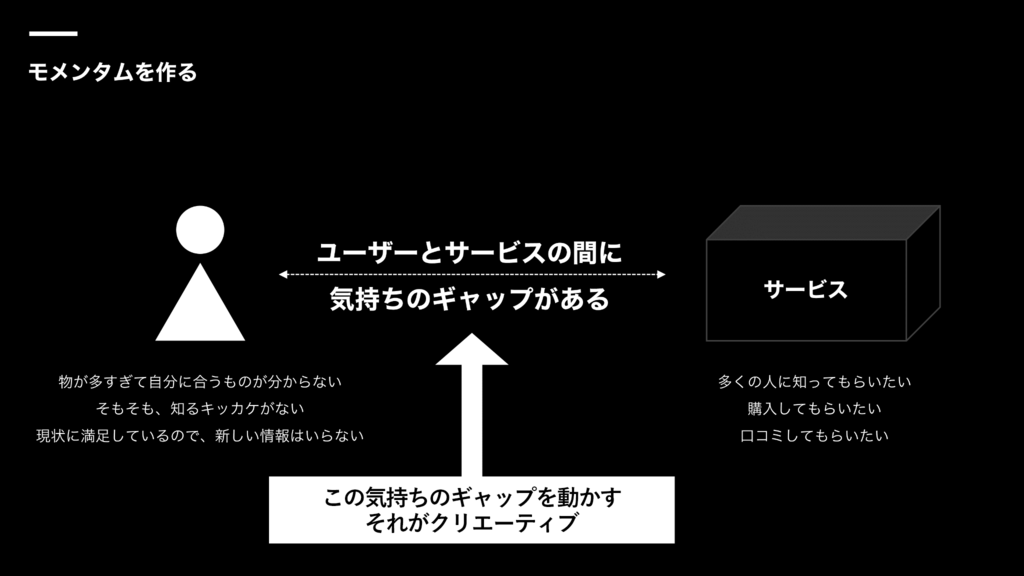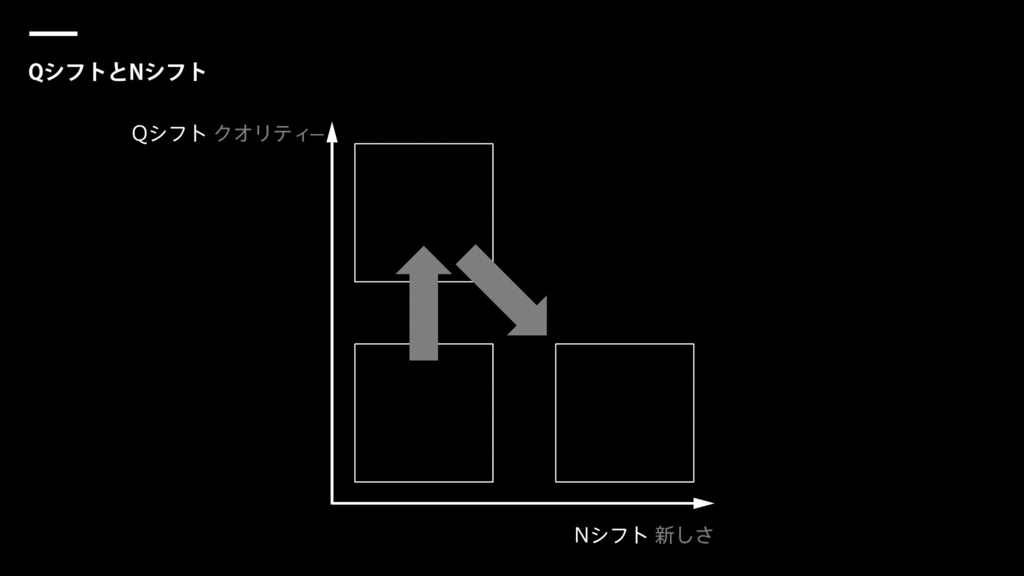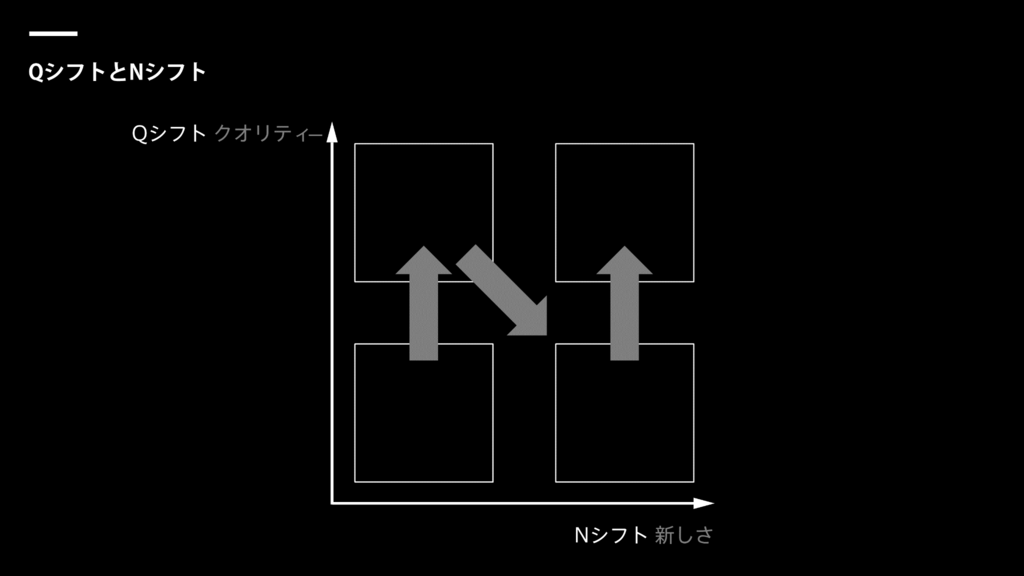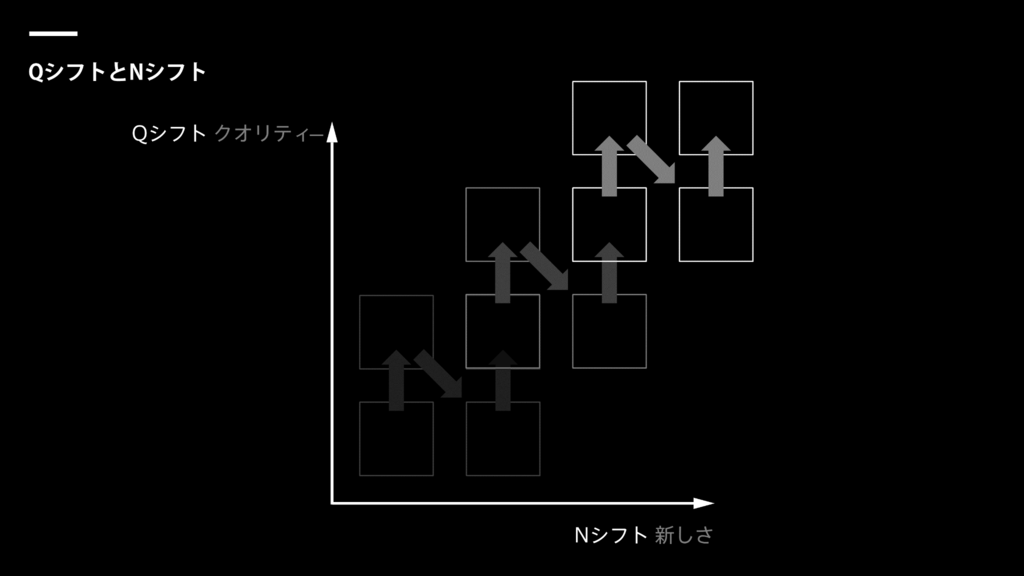Note: This website was automatically translated, so some terms or nuances may not be completely accurate.
What is "Momentum"? Bridging the gap between ideal and reality. Pursuing the true role of creativity in an era of change.
When you hear "ad agency creative," what comes to mind? Most people probably think of things tied to advertising, like commercials, graphics, or web promotions. In reality, these are just one type of deliverable. Here, I want to revisit the fundamental role of creative.
What is Creative?
When we create creative work, there are often users and a service involved. Sometimes we design the service itself, and other times we discover the value of an existing service and take on the role of delivering it to more people.
Generally, a gap exists between the user and the service, as illustrated below.

Creative work is what we do to bridge this gap.

To bridge the gap between users and services, we create commercials, run campaigns, and engage in various forms of service design.

In other words, what creatives produce isn't the output itself—like commercials or campaigns—but the design of the passion that bridges the gap between users and services. Through creativity, we generate "momentum." Here, momentum refers to "the attitude and passion that bridges the gap between ideal and reality."
The means are limitless. Commit to momentum.
The COVID-19 pandemic has forced major transformations in our lives and business environments. Consequently, terms like DX (Digital Transformation) and CX (Customer Experience Transformation) are now ubiquitous topics across all media.
Given the changed social landscape, transformation is essential, and personally, I embrace this change positively. However, it's also true that terms like DX and CX often take precedence, creating the impression that merely introducing tools equates to transformation.
The example that moved me most during the pandemic was the "Silent Eating" poster designed by a curry shop in Fukuoka. At the time, messages like "Eat quietly" and "Wear a mask when talking to others" were being disseminated through every channel, but I don't believe they truly resonated with society. In that social climate, the "Silent Eating" poster designed by the shop owner, a former designer, undoubtedly moved the world. The designed output was just one poster, yet it created momentum among people nationwide.
As long as you can design momentum, the means don't matter. Posters, letters, websites, videos, social media, apps, events—any approach is valid. Designing context and creating momentum is the creative professional's job. To make it happen, each creative individual must move with determination, quickly and sometimes with grit, expanding their own domain beyond organizational, positional, job type, and method barriers.
Transformation means discarding fixed notions and discovering the "ideal state."
While the pandemic has made transformation urgent across many industries, the reality is that many workplaces remain trapped by past solutions.
One project I'm personally involved with is "Techno Memorial Services." Born from the challenge of "solving youth disengagement from religion through technology," it's a new style of memorial service where Rev. Yukinobu Asakura, head priest of Shōonji Temple (Jōdo Shinshū Honganji-ha) in Fukui City, chants sutras set to techno tracks.
My first encounter with techno memorial services dates back to December 2017. I happened to see information on social media about one being held at Tsukiji Honganji Temple. I went to experience it with a colleague, partly as research.
To be honest, I initially approached it skeptically, thinking it was just a gimmicky trend. But after participating, my perspective changed completely. Hearing facts like: "Temples back then were like amusement facilities with lavish decorations," and "Candles were essentially the projectors of their time," "Even Buddhist statues, now commonplace, were forbidden for 500 years after Shakyamuni Buddha's passing." "Candles were the projectors of their time." Hearing these facts, combined with sensory information flooding my senses, sparked revelations: "How natural this feels!" "Wasn't the virtue of tradition supposed to be its immutability?" It was the moment my preconceptions dissolved. I learned with a jolt that "resting on the laurels of tradition and neglecting to change is nothing but complacency; a constant attitude of updating is necessary." Since then, I've had many opportunities to collaborate with Mr. Asakura, and from his flexible thinking and persistent spirit of challenge, I gain new insights with each project.
As this example shows, we often live bound by fixed notions. I believe that designing new experiences with free thinking, unshackled by such notions, and creating momentum is the essence of creative work. That's how I approach my daily actions.
Questioning Aesthetic Judgment
That said, it's also true that we often struggle to accept new things. The reason is simple: new things can appear to be of lower quality at first glance.
Consider the concepts of Q-shift and N-shift. In the diagram below, the vertical line represents Q-shift = "Quality." The horizontal line represents N-shift = "Novelty."
Within existing domains, a "quality battle" occurs along the vertical line within established formats. TV commercials and products like cars or PCs are clear examples. Precisely because the format is the same, companies strive to differentiate themselves by aiming higher and competing on quality.

Amidst this, an N-shift suddenly occurs.

In the case of an N-shift, the format itself is different. To those competing in the old market, it may initially appear as if quality has declined.

Once the value of the N-shift is recognized, a quality battle begins within that new format.

If you dismiss it as "low quality" the moment an N-shift occurs, innovation will cease to emerge from that point.
When Netflix first began producing films and dramas, the existing industry viewed it with skepticism. Yet today, its quality has risen to a level that is nothing short of astonishing.
From electric vehicles to cryptocurrency, new energy, robotics, and virtual applications—these gain attention precisely because of the N-shift. Focusing only on the negatives leaves you behind the curve. Just as Japan's once-dominant feature phones froze solid with the iPhone's arrival, the N-shift will replace key players across all industries going forward. It's crucial to embrace this seemingly low-quality state positively and find ways to enjoy it. Don't measure with old yardsticks; maintain the humility to question your own aesthetic judgment and constantly update your values. This perspective is vital for designing the next generation.
When people think of advertising agency creativity, many assume it's media-centric. But our true purpose is to create momentum. Armed with the execution skills and quality honed through advertising, we will continue challenging transformation across diverse fields.
We live in an era of high uncertainty. Precisely because of this, we must provide new value through free thinking, unbound by fixed notions. The accumulation of small discoveries and improvements leads to customer satisfaction, and ultimately, to a society filled with people's smiles.
The potential of creativity is limitless. Let's build a wonderful future together.
The information published at this time is as follows.
Was this article helpful?
Newsletter registration is here
We select and publish important news every day
For inquiries about this article
Author

Kenichi Kawamura
Dentsu Digital Inc.
Creative Department Unit 2
Creative Director
After working as an art director and interaction designer, he joined Isobar Japan (now Dentsu Digital Inc.). Combining expertise in cutting-edge technology with marketing knowledge, he realizes creative concepts based on these insights. Key projects include authoring "The TOUCHDESIGNER Bible for Visual Creators," planning, producing, and operating "NEXT WORLD EXHIBITION," and speaking at the "TouchDesigner Summit 2019" in Montreal.

